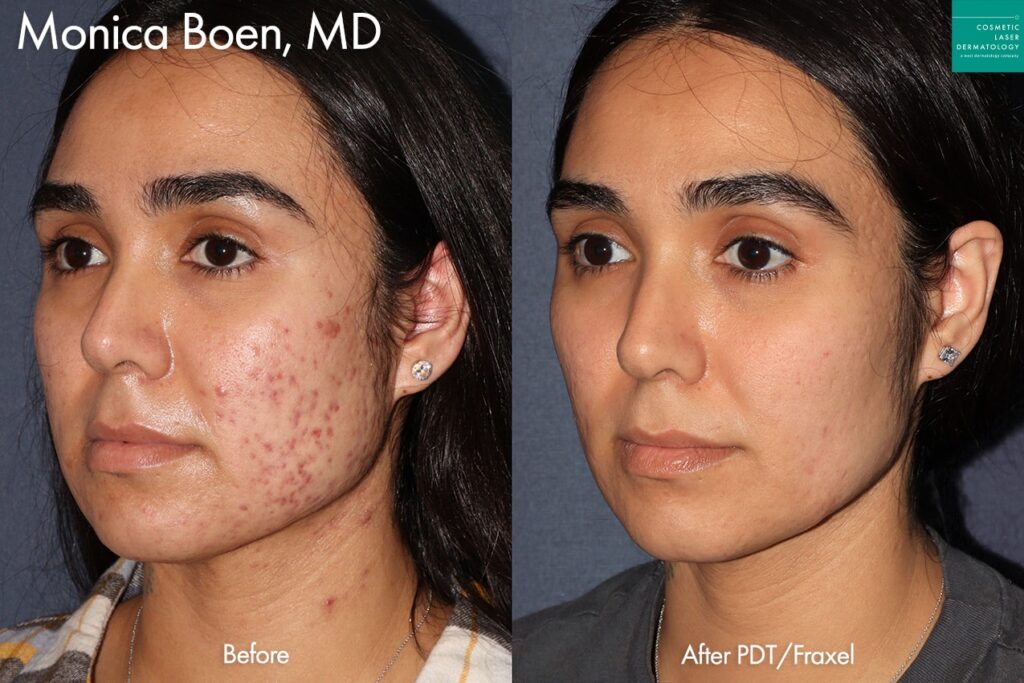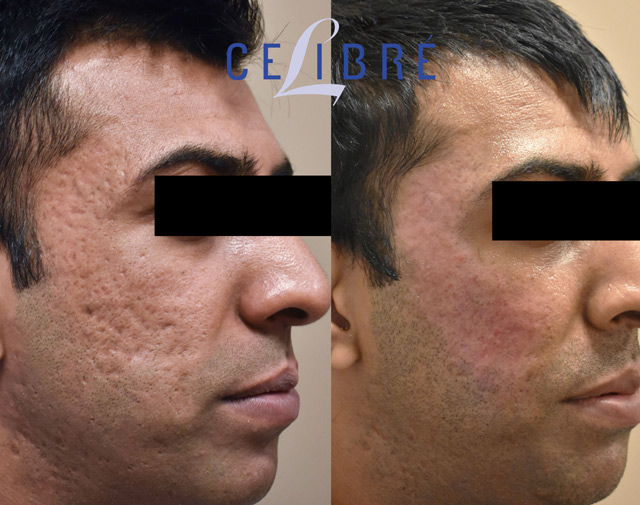Comprehending the Different Skin Disease and Reliable Treatment Choices for Acne Scars
Acne scars represent a complex interaction of skin conditions that considerably influence individuals' self-confidence and general skin health and wellness. As we check out the landscape of acne mark monitoring, it comes to be noticeable that the trip towards more clear skin may involve more than simply topical remedies.
Kinds Of Acne Marks

In contrast, hypertrophic scars arise from an overflow of collagen during the recovery procedure, causing raised areas on the skin. These scars are typically strong and can vary in shade, sometimes appearing red or darker than the bordering skin.
Comprehending these kinds of acne scars is vital for developing an effective treatment strategy - skin rejuvenation treatments. Options might consist of chemical peels, laser treatment, microneedling, or dermal fillers, tailored to the particular mark kind. A complete examination with a skin doctor can aid figure out one of the most suitable treatment, considering the individual's skin type, scar intensity, and total skin health
Root Causes Of Acne Scarring
Scarring occurs as an outcome of the body's all-natural healing action to swelling and injury triggered by acne lesions. When acne kinds, it sets off an inflammatory action, resulting in the release of various cytokines and growth aspects that advertise recovery. This procedure can occasionally lead to too much cells formation or insufficient repair, resulting in marks.
The key reasons for acne scarring consist of the severity of the acne itself, period of the lesions, and individual skin types. Serious inflammatory acne, such as blemishes and cysts, is most likely to cause scarring due to much deeper cells damages. In addition, improper handling of acne sores, such as squeezing or selecting, can aggravate cells injury and swelling, raising the chance of scarring.
Hereditary proneness also plays a substantial role; individuals with a household history of scarring are at a greater danger. Skin type and color can affect mark formation, as darker skin tones might experience post-inflammatory hyperpigmentation, while lighter skin might develop atrophic marks.
Eventually, recognizing these reasons is necessary in taking care of acne and reducing the capacity for scarring.

Treatment Options for Scarring
Effective treatment options for acne scarring differ relying on the type and extent of the marks. Normally categorized right into atrophic, hypertrophic, and keloid scars, these problems need tailored strategies for ideal results.
For atrophic marks, which are characterized by a loss of tissue, therapies such as chemical peels, microdermabrasion, and laser therapy are commonly used. These techniques promote skin renewal and boost collagen production, thereby boosting skin structure. Subcision, a minimally intrusive procedure, can additionally be efficient by separating coarse bands beneath the skin.
Keloid and hypertrophic marks can be much more testing to treat. Alternatives include corticosteroid shots to reduce swelling and flatten the marks. In many cases, cryotherapy or laser therapy may be recommended to lessen their look.
Surgical options are offered for serious scarring, where excision or skin grafting may be required. It's vital for people to seek advice from a skin specialist to examine their particular mark type and talk about one of the most suitable treatment strategy. Combining several treatments frequently produces the very best end results, ensuring that each client's one-of-a-kind skin problem is attended to properly.
Home Treatments and Natural Solutions
All-natural solutions and natural home remedy can give hop over to these guys an available strategy for people looking for to enhance the appearance of acne marks (acne treatment for sensitive skin). Various components located in the home kitchen area have actually shown potential benefits in improving skin structure and advertising recovery

An additional efficient choice is lemon juice, which acts as an all-natural exfoliant and can lighten hyperpigmentation. It needs to be used meticulously, as it may create photosensitivity. Oatmeal masks are additionally valuable; their gentle peeling can help get rid of dead skin cells while relaxing irritability.
Necessary oils, such as tea tree oil and lavender oil, can even more sustain scar recovery due to their antimicrobial homes. It is crucial to do a spot test prior to applying any kind of remedy to make sure there are no adverse reactions. These all-natural services can be a corresponding approach in the journey to lessen acne scars.
Avoiding Future Scarring
Taking on a proactive technique to skin care can significantly minimize the threat of developing future acne scars. One of the essential strategies is to handle acne successfully as it emerges. This involves utilizing non-comedogenic skin care items and medications prescribed by skin specialists that target acne without aggravating the skin. Regular cleansing, exfoliation, and hydration can assist keep skin wellness and prevent clogged pores.
Additionally, preventing the lure to press or select acne sores is essential, as this can result in inflammation and subsequent scarring. Rather, individuals need to focus on applying topical treatments that promote recovery and reduce swelling. Components such as salicylic acid, benzoyl peroxide, and retinoids are known for their efficacy in handling acne and lessening scars.
Sun protection is an additional essential part; direct exposure to UV rays can impede and you can find out more dim marks recovery. Therefore, making use of a broad-spectrum sunscreen daily can minimize these impacts - acne scars treatment.
Last but not least, keeping a healthy and balanced diet plan rich in antioxidants and staying moisturized supports skin regeneration. By executing these safety nets, people can substantially reduce their danger of future scarring and promote total skin health and wellness.
Final Thought
To conclude, a detailed understanding of acne scars, incorporating both hypertrophic and atrophic kinds, is crucial for effective therapy strategies. Tailored treatments, including professional treatments and natural remedy, can substantially boost skin look and texture. Safety nets additionally play an essential function in minimizing future scarring. Examination with see here a skin doctor continues to be important to develop individualized techniques that take into consideration individual skin types and scar seriousness, eventually improving the effectiveness of mark administration strategies.
Acne scars stand for an intricate interaction of skin problems that considerably influence individuals' self-esteem and total skin health and wellness. The 2 primary categories of acne scars are atrophic and hypertrophic marks. These marks are more classified right into 3 subtypes: ice choice scars, which are slim and deep; boxcar marks, which are larger and have distinct sides; and rolling scars, which produce a wave-like look due to irregular skin appearance.
A detailed assessment with a skin doctor can help determine the most appropriate intervention, taking into account the individual's skin kind, mark intensity, and total skin wellness.
Assessment with a skin doctor remains critical to create personalized approaches that think about private skin types and mark severity, ultimately improving the effectiveness of mark monitoring strategies.